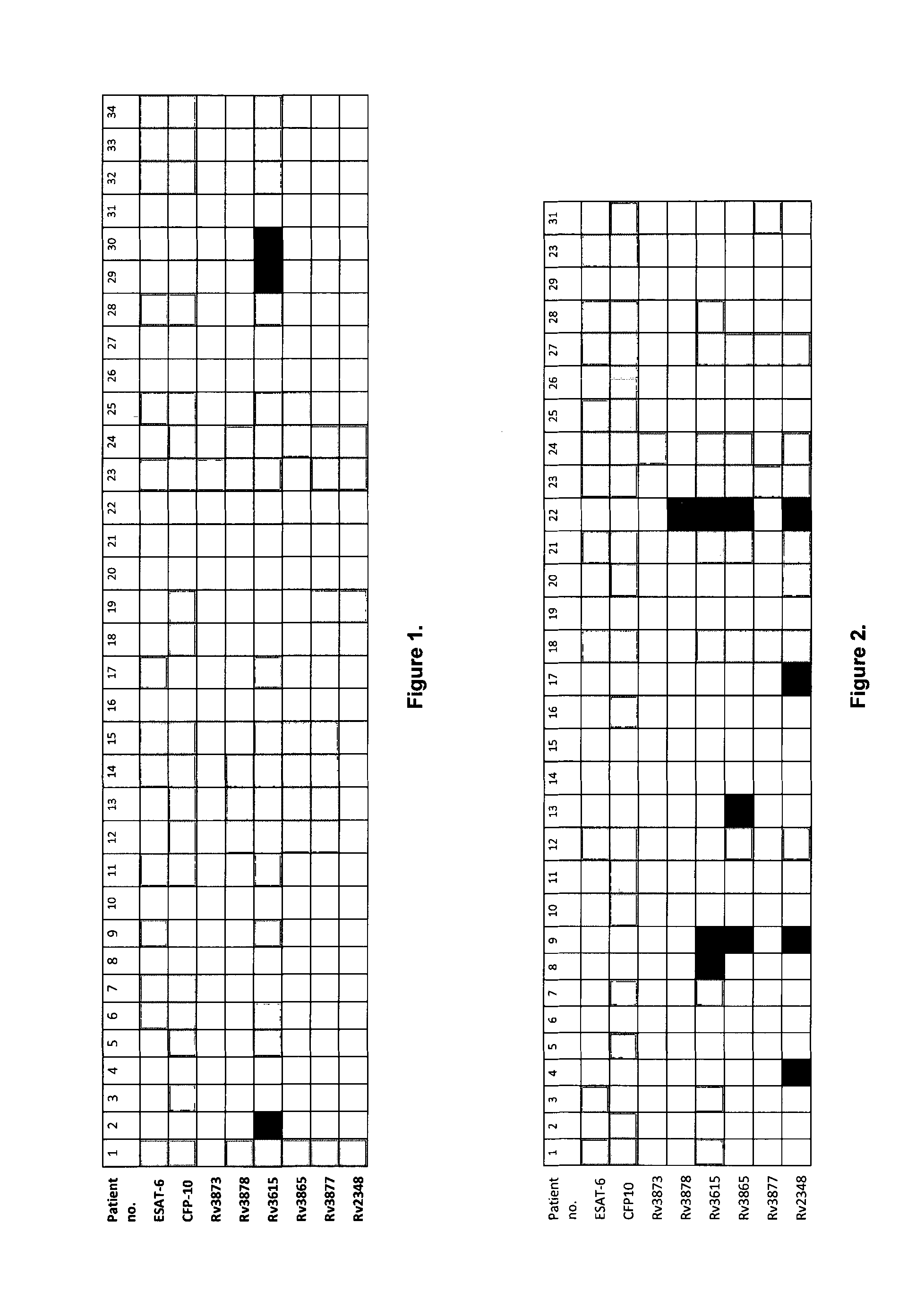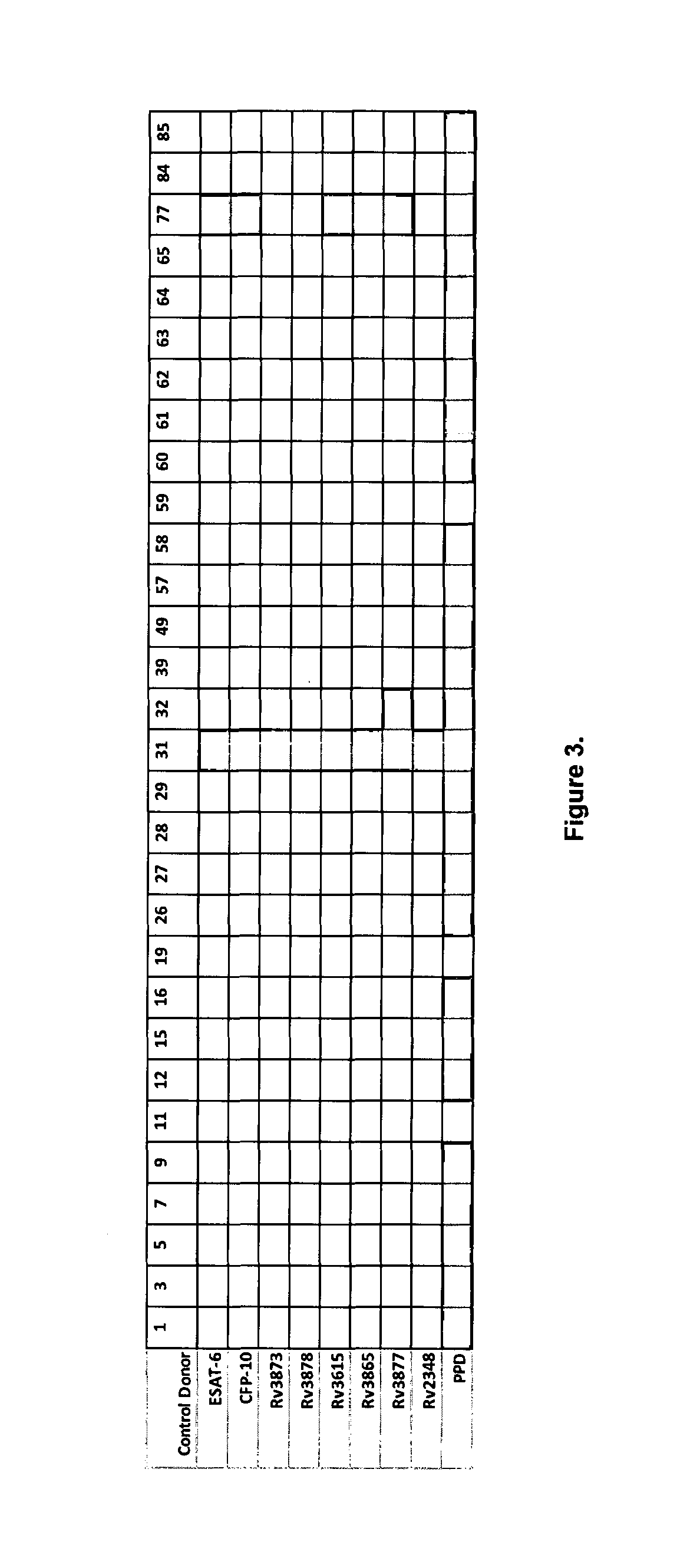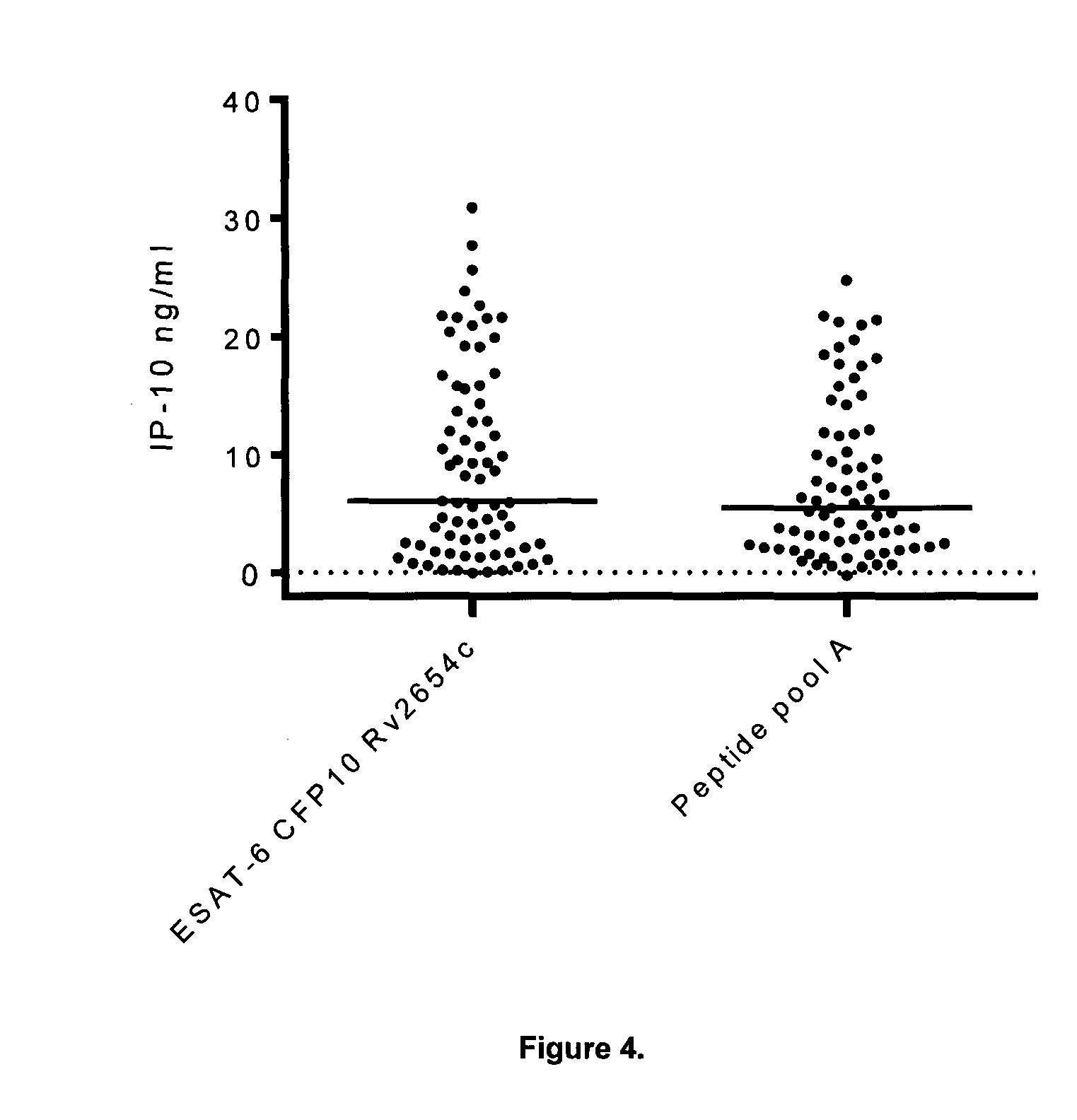Diagnostic reagents for improved in vivo or in vitro cell-mediated immunological diagnosis of tuberculosis
a technology of immunological diagnosis and diagnostic reagents, which is applied in the field of diagnostic reagents for improving in vivo or in vitro cellmediated immunological diagnosis of tuberculosis, can solve the problems of inconvenient methods, far from ideal in detecting i>m. tuberculosis /i>infection, and i>tb is a major cause of morbidity and mortality in the world, and achieves the effect of increasing
- Summary
- Abstract
- Description
- Claims
- Application Information
AI Technical Summary
Benefits of technology
Problems solved by technology
Method used
Image
Examples
example 1
Initial Selection of Antigens
[0105]T cell antigens selected for the immunodiagnosis of TB should be specific for M. tuberculosis infection to avoid interference from vaccination with BCG and most prevalent atypical mycobacteria. At the same time, it is important to avoid ESAT-6 given that ESAT-6 is present in many of the novel vaccines against TB. As described above in Background of the invention, we have through an extensive and strict down-selection process based on theoretical considerations, practical testing and literature search of hundreds of potential antigens selected no more than 9 M. tuberculosis-antigens for further testing. These are:
[0106]CFP10 (Rv3874). The 10-kDa culture filtrate antigen is together with ESAT-6 the basis in the current cell-based diagnostic blood tests for M. tuberculosis infection by the IFN-γ release assays (IGRAs). CFP10 is an immunodominant M. tuberculosis antigen, and the diagnostic specificity of CFP10 and ESAT-6 is caused by their genomic loca...
example 2
Selection of Antigens
[0114]Seven of the antigens listed in the text above were tested for recognition in TB patients or latently infected individuals in two independent studies in Egypt and Greenland. In both studies, ESAT-6 (Rv3875) was also included as a comparator and benchmark antigen. Furthermore, PPD was included in Egypt as an example of an unspecific antigenic stimulation.
[0115]Freshly sampled diluted whole blood was re-stimulated with the selected peptides from the antigens as outlined and the response to peptide-pools of ESAT-6 and CFP10 was included as benchmark.
[0116]In the Egypt study 34 volunteer donors (8 females and 26 males) were included as positive controls. Thirty-two of these were diagnosed with TB disease with documented positive sputum culture (subjects 3-34). Two cases had latent TB (subjects 1 and 2). In addition, 30 endemic negative control donors (5 females and 25 males) were included. These were all presumed BCG vaccinated, had no history of TB disease an...
example 3
CFP10 and 3615c are Comparable to CFP10 and ESAT-6
[0119]The diagnostic performance of the combination CFP10 and Rv3615c was subsequently compared to that of the combination CFP10 and ESAT-6. We included whole blood samples from 35 individuals from Greenland of which 18 had a latent M. tuberculosis infection defined as a positive Quantiferon test and / or proven exposure to M. tuberculosis and tuberculin skin test conversion and 17 patients that were microbiologically confirmed TB. Individual aliquots of 200 μl undiluted whole blood was stimulated with overlapping peptides representing CFP10 (SEQ ID 1) or Rv3615 (SEQ ID 15-18) or ESAT-6 (SEQ ID 51) in a final concentration of 5 ug / ml in a humidified 37° C. incubator for 7 days. A negative control sample (nil) was prepared in a parallel. After incubation, the plasma supernatant was isolated and the level of IFN-γ was determined using ELISA.
[0120]The diagnostic ability of the three antigens was assessed by adding the measured level of an...
PUM
| Property | Measurement | Unit |
|---|---|---|
| concentration | aaaaa | aaaaa |
| concentration | aaaaa | aaaaa |
| concentration | aaaaa | aaaaa |
Abstract
Description
Claims
Application Information
 Login to View More
Login to View More - R&D
- Intellectual Property
- Life Sciences
- Materials
- Tech Scout
- Unparalleled Data Quality
- Higher Quality Content
- 60% Fewer Hallucinations
Browse by: Latest US Patents, China's latest patents, Technical Efficacy Thesaurus, Application Domain, Technology Topic, Popular Technical Reports.
© 2025 PatSnap. All rights reserved.Legal|Privacy policy|Modern Slavery Act Transparency Statement|Sitemap|About US| Contact US: help@patsnap.com



